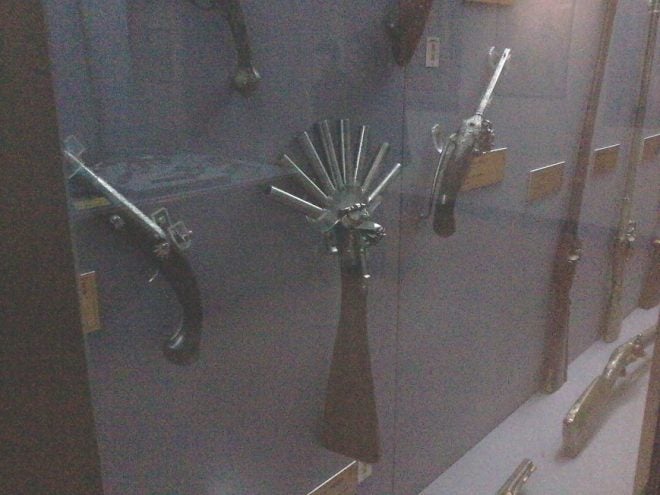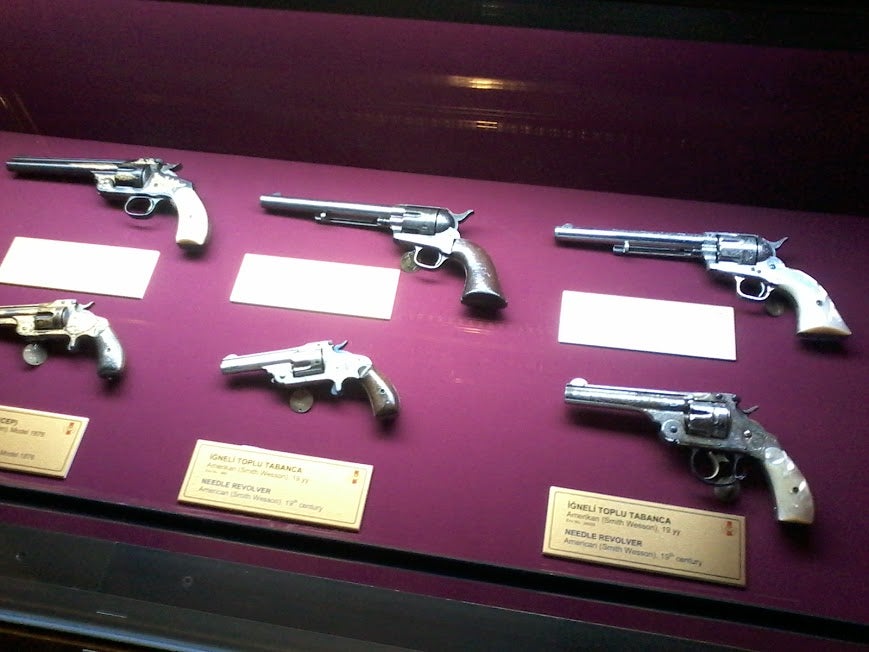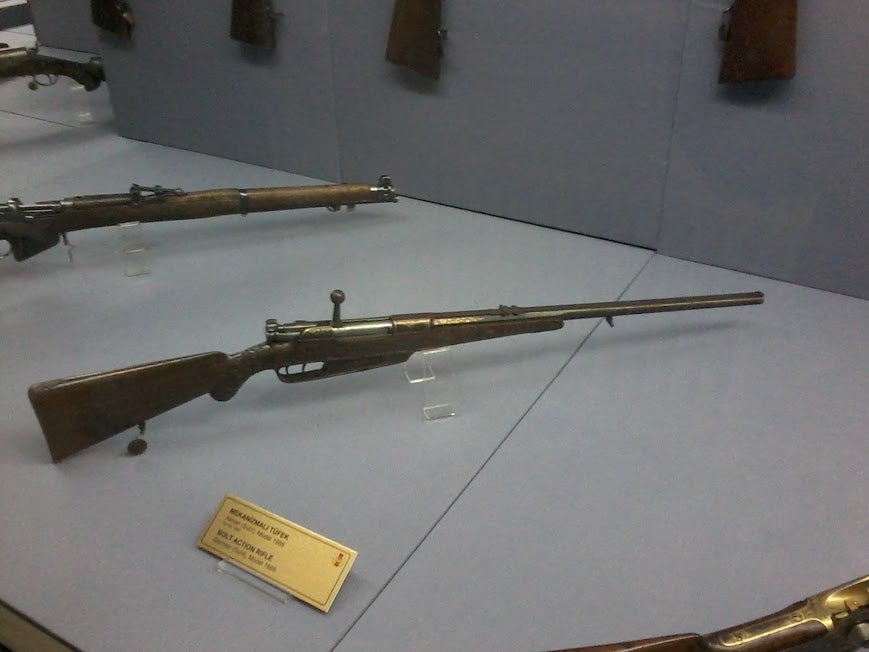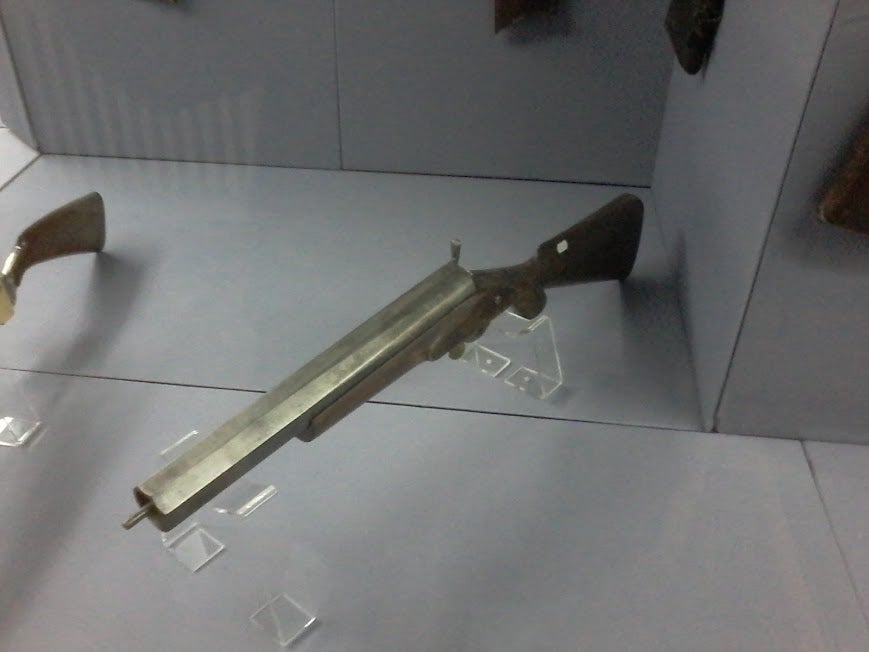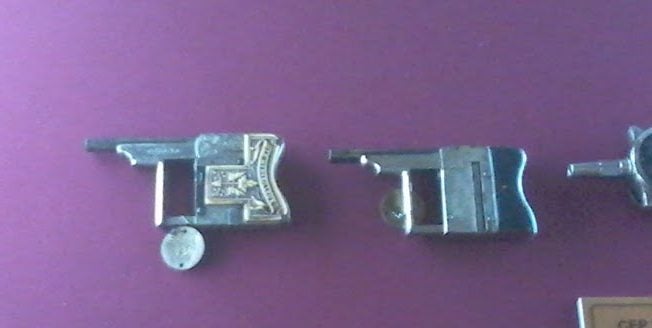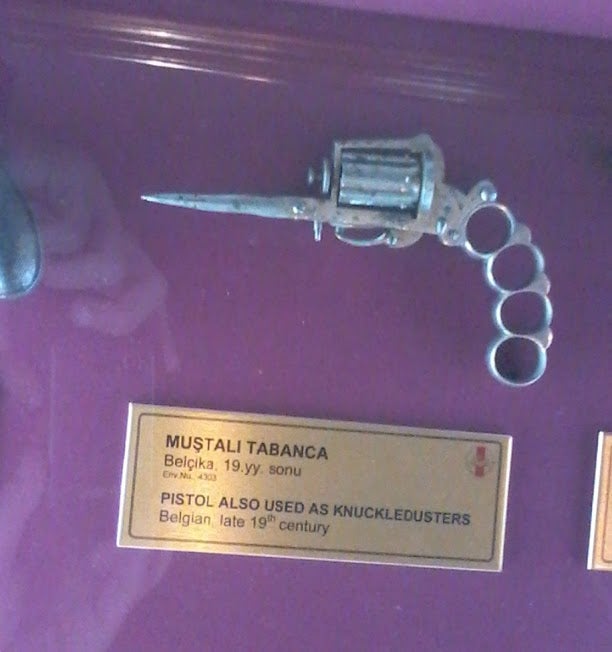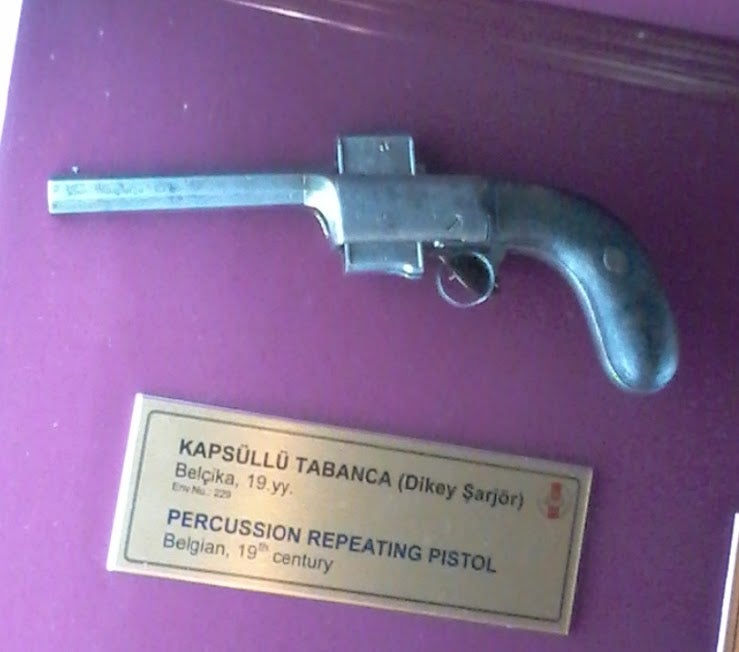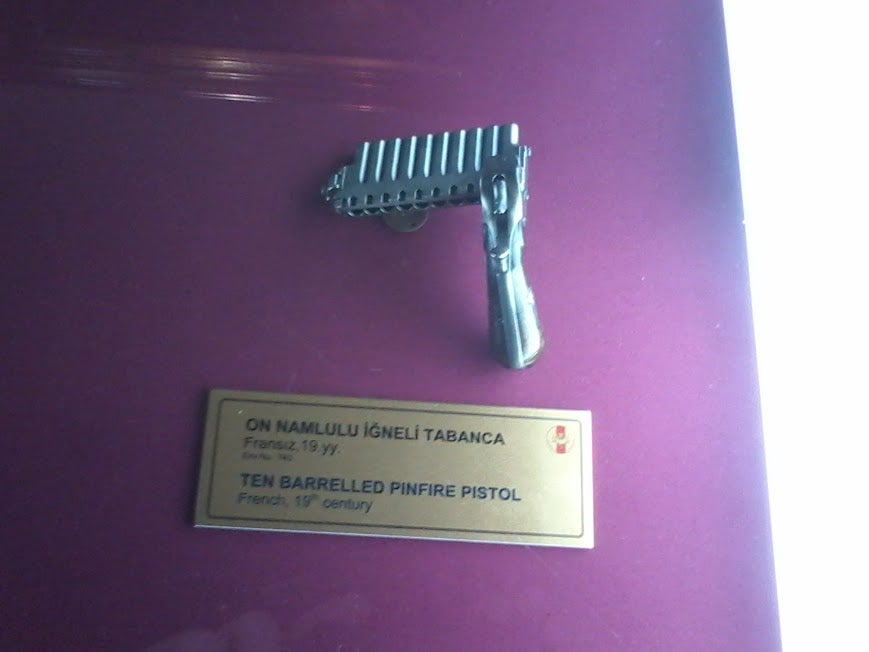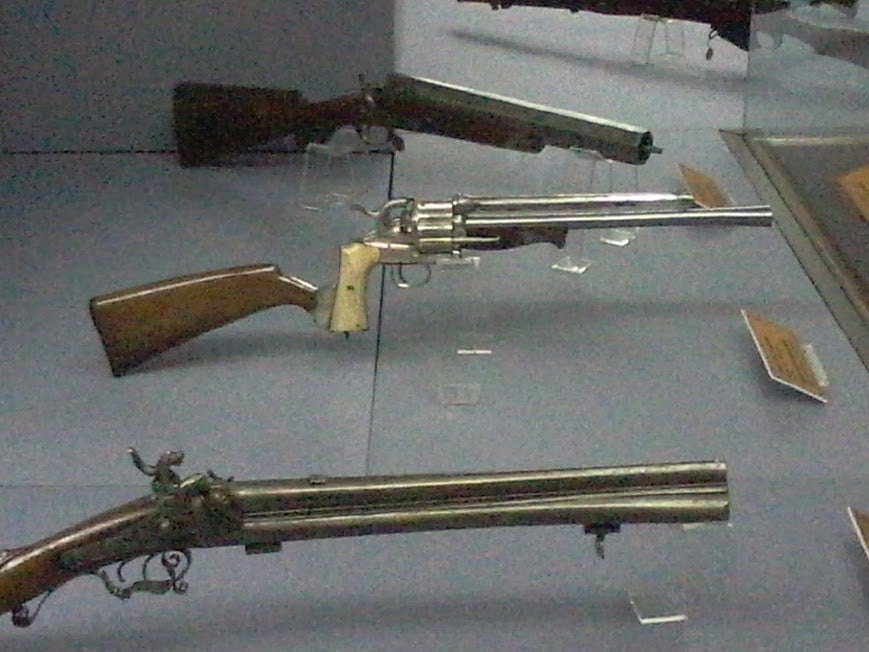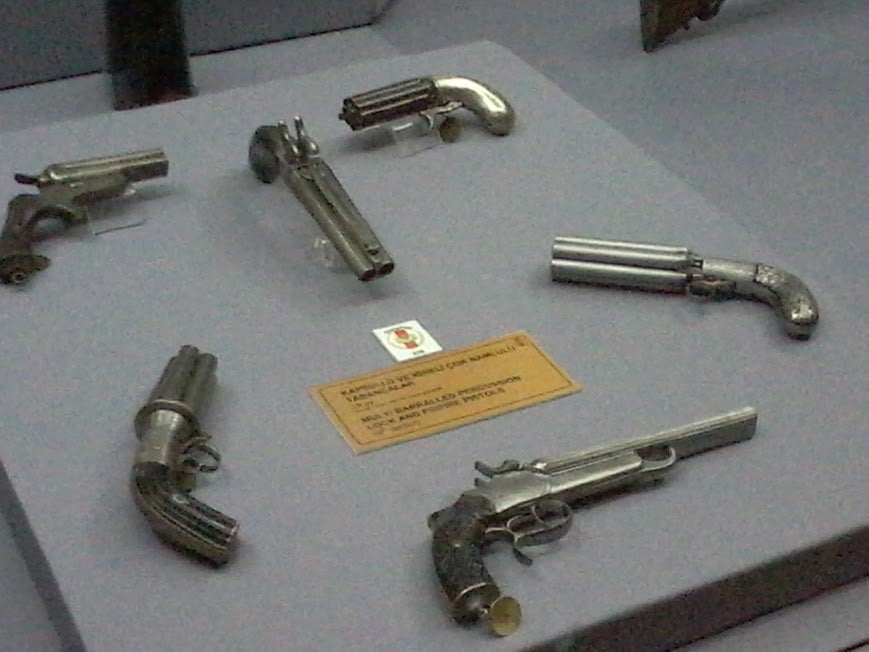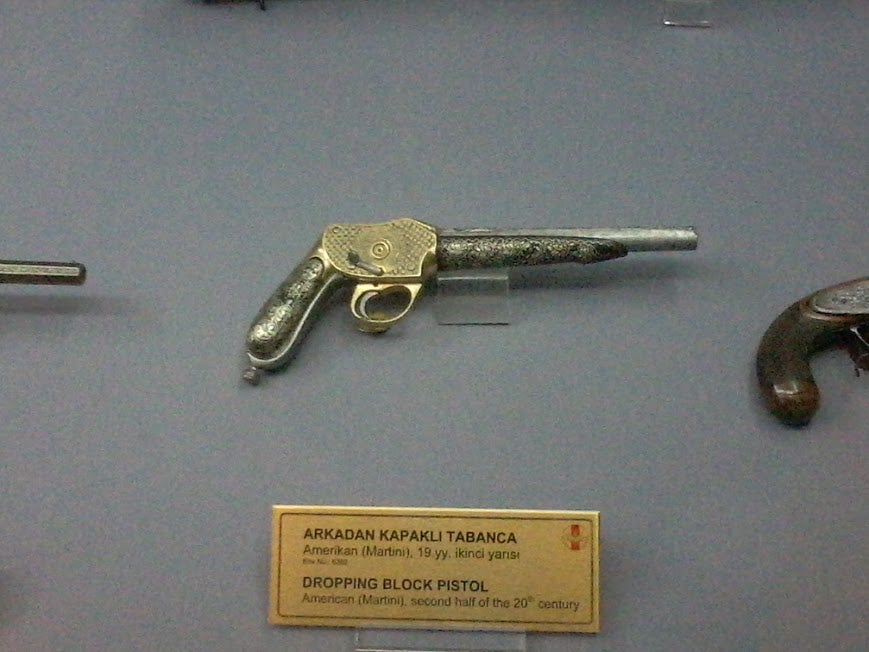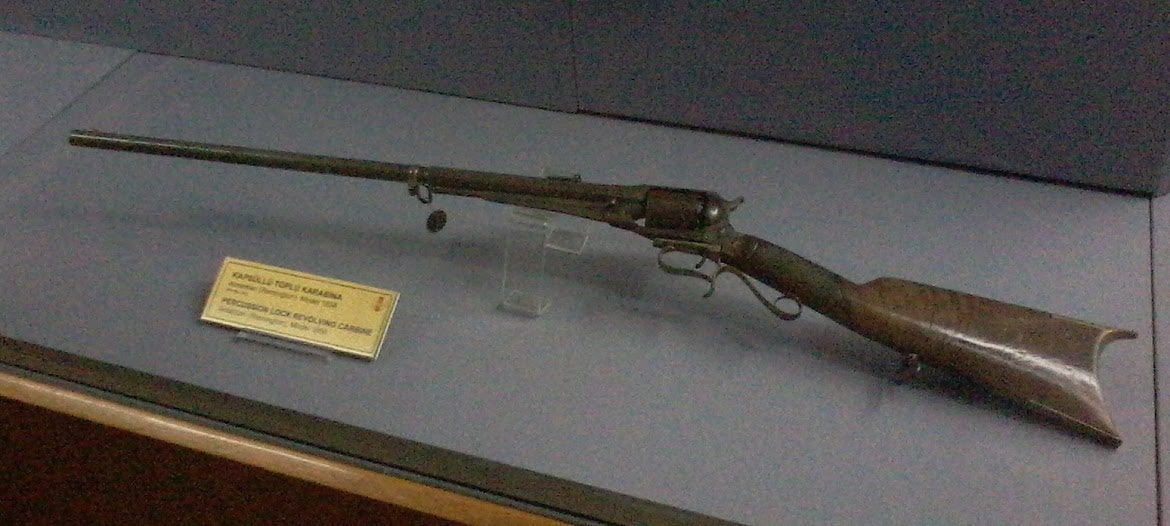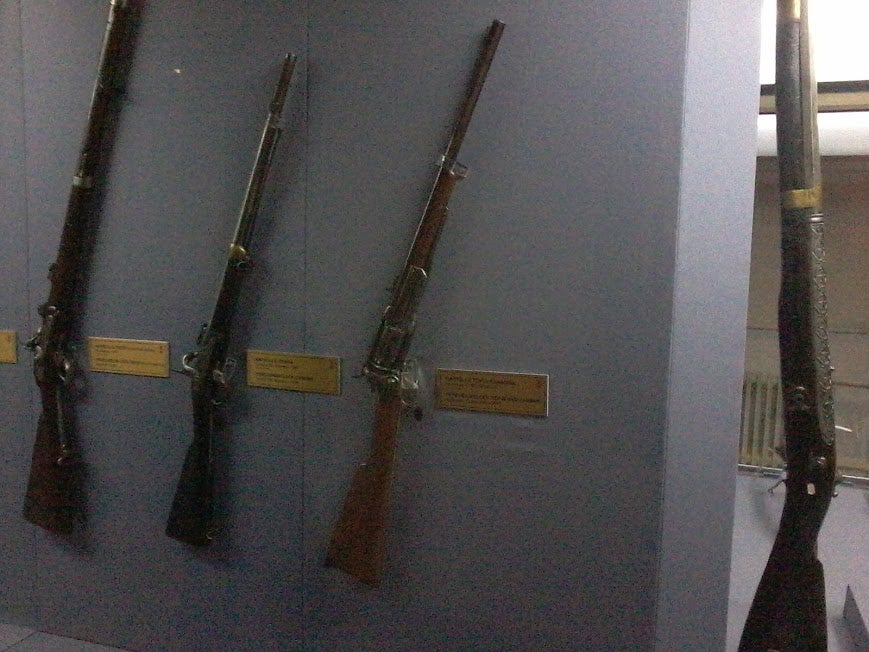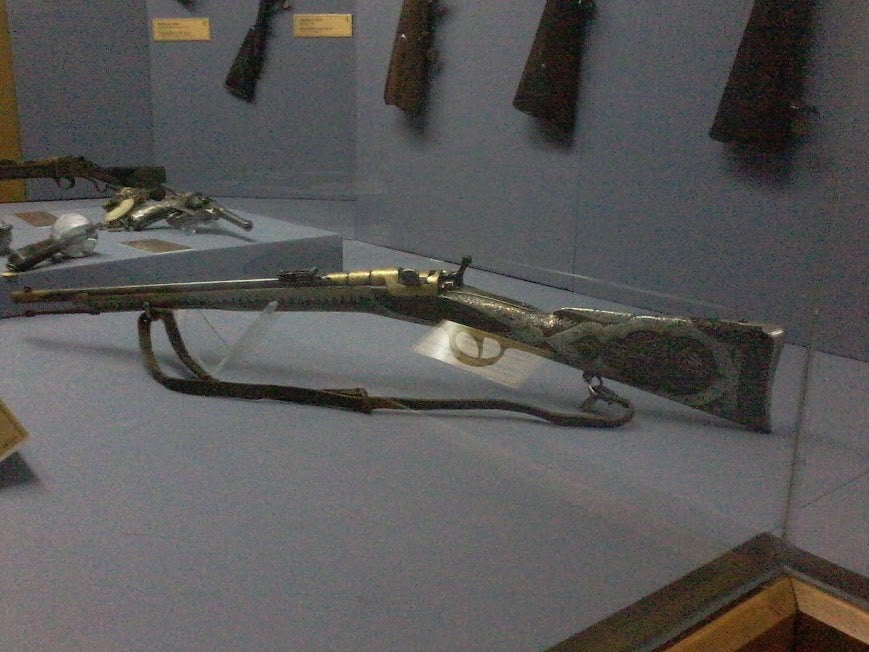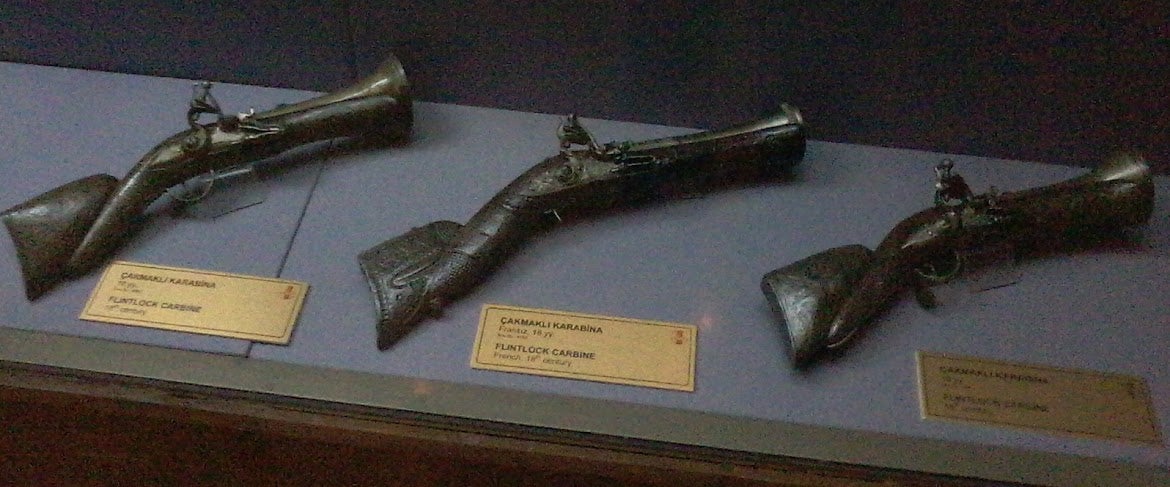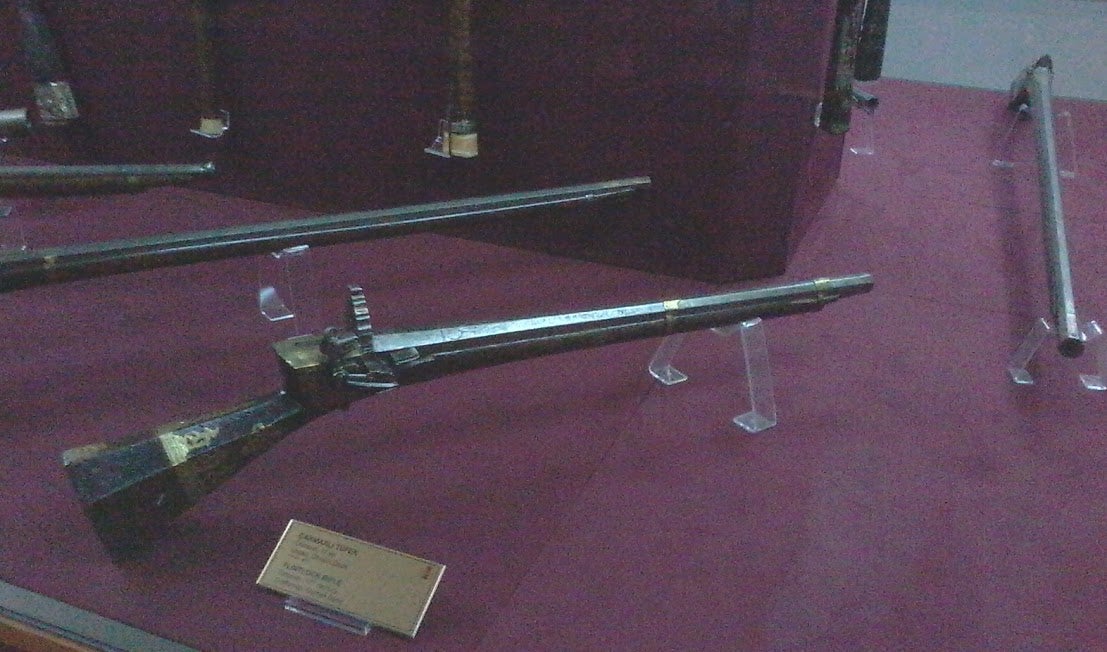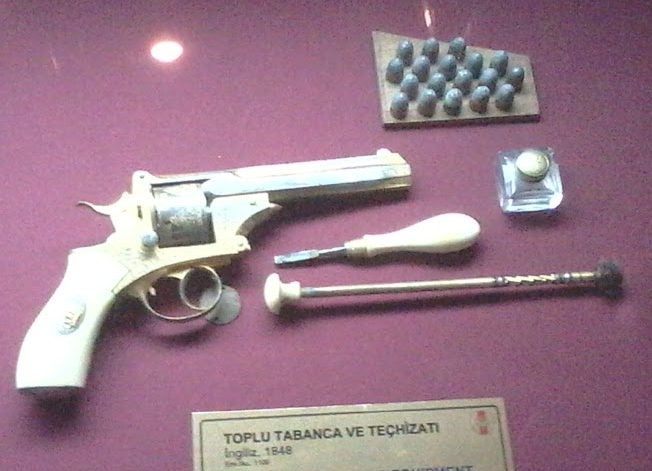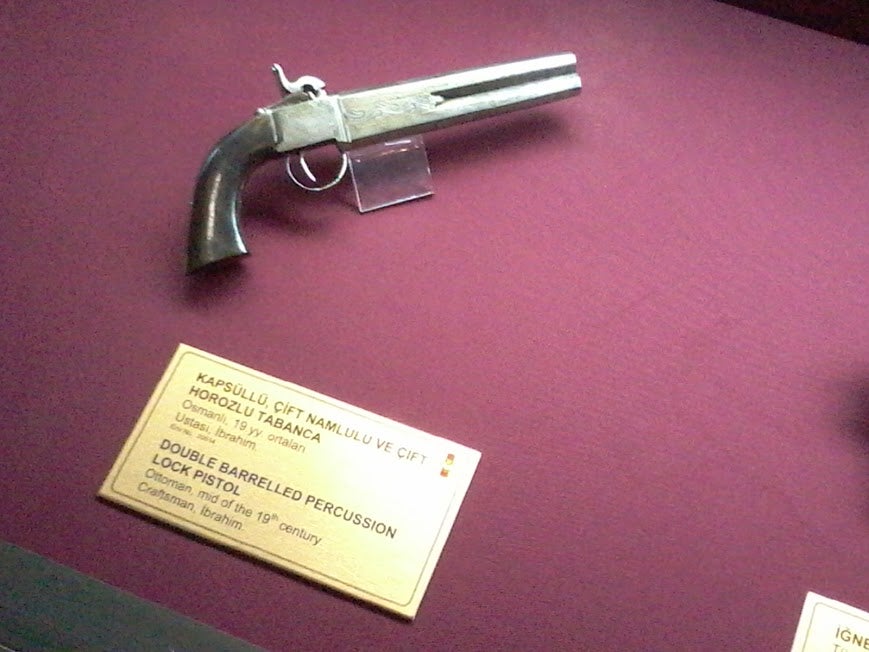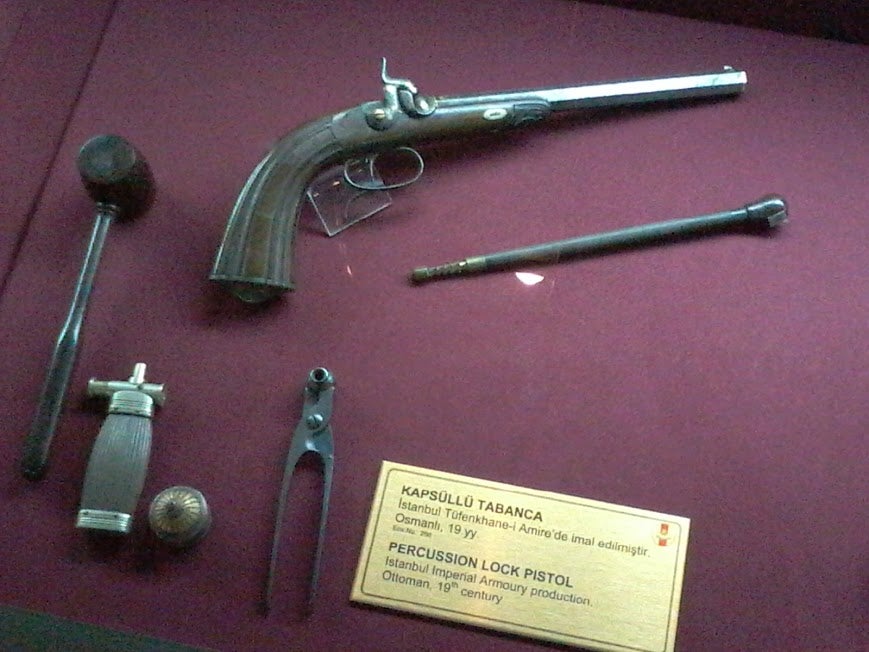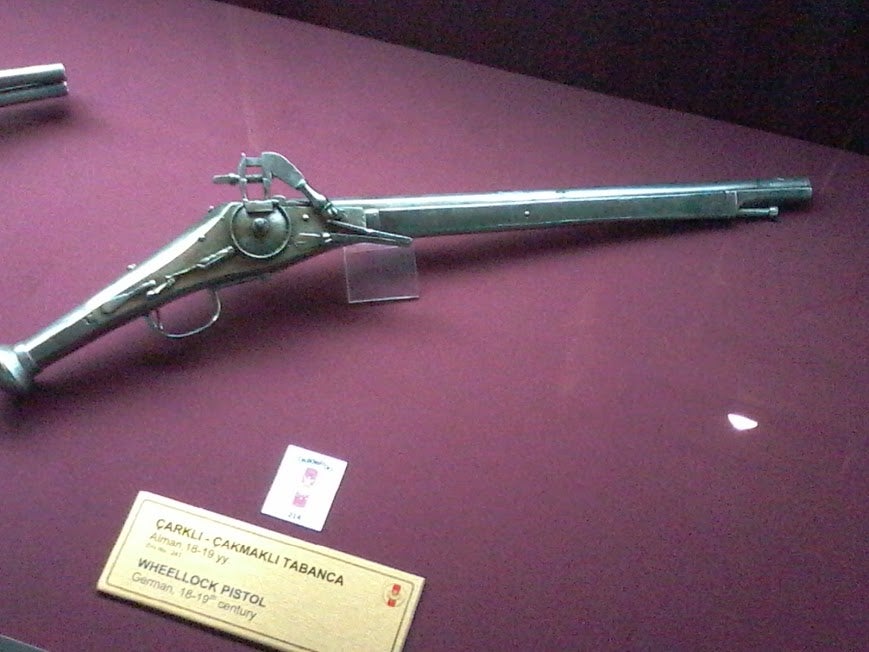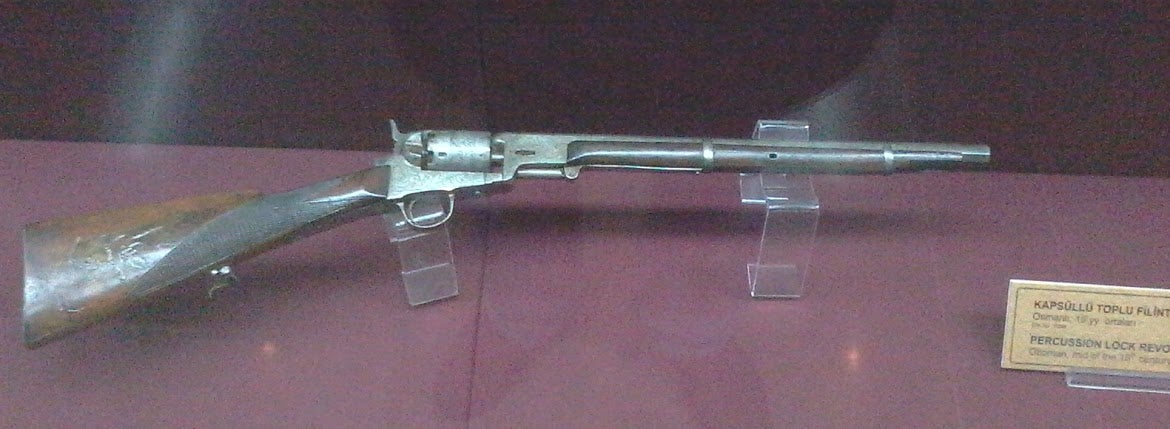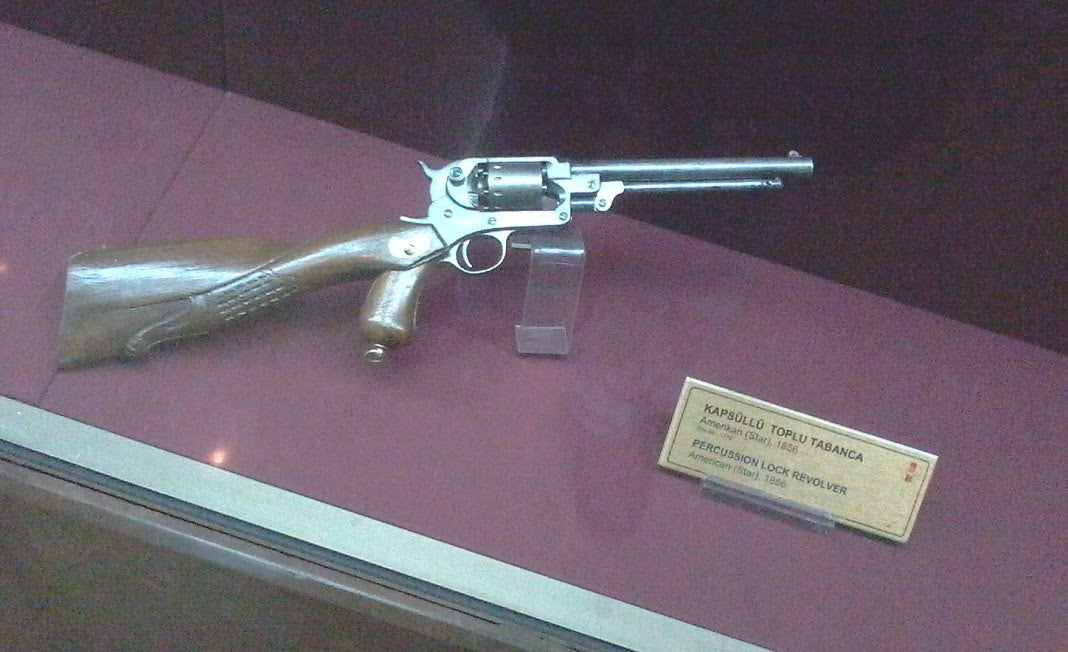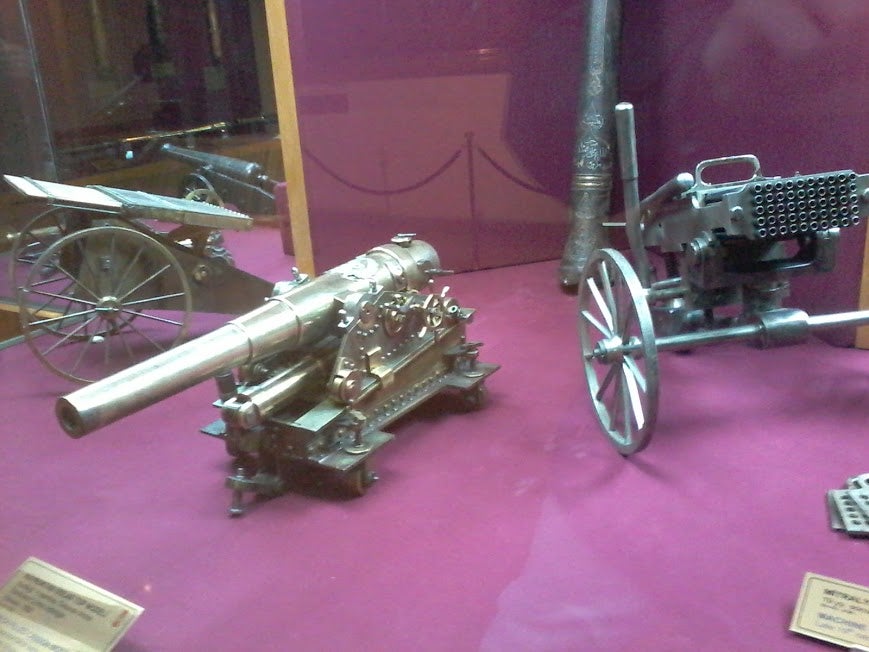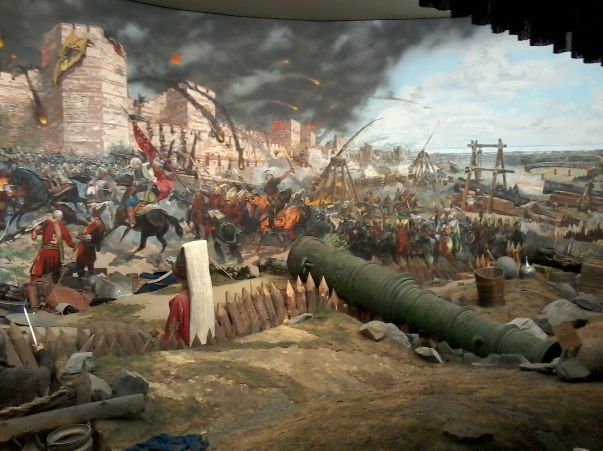This guest post has been submitted to TFB on behalf of Marawan M, an Egyptian firearms designer currently working in Turkey for a civilian Turkish firearms company. Recently he visited the Istanbul Military Museum and wrote up a summary of his visit along with accompanying photographs. This is Marawan M’s first guest post for TFB.
The Istanbul Military Museum (Turkish: Askeri Müzesi) is dedicated to one thousand years of Turkish military history. It is one of the leading museums of its kind in Turkey. Once you walk into the museum you will feel yourself walking through the corridors of Turkish history.
First to come to a visitor’s attention is a huge German built howitzer manufactured for naval defense since it is ground mounted. Beside the howitzer is a statue of a local hero named “Seyit Çabuk”(Seyid Chabuk). It is said that he carried over 200 kilograms (440 lbs) of projectiles for his cannon crew during the Gallipoli campaign in the First World War.
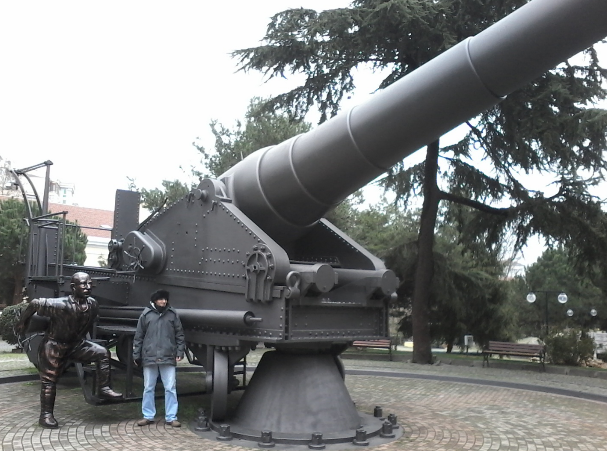 (Please note that I’m 5’10 next to this cannon)
(Please note that I’m 5’10 next to this cannon)
A fine collection of historical weapons, uniforms and tools of various periods of the army are currently being exhibited throughout the museum. The highlights of the collection are the many magnificent campaign tents and standards. Outside the museum there is a large amount of interesting Ottoman Empire era cannons and mortars, aircraft, and helicopters are on display. These items are certainly of interest to any history enthusiast, but this article is primarily about the small arms.
Accompanying the photographs are brief descriptions explaining the significance of the small arms displayed.
(Matchlock Revolving Rifle – Ottoman made – 17th Century)
This matchlock revolving rifle was very advanced for its time period, having a multi chambered matchlock in this era gives you the firepower of several men and saves you vital time which was wasted in reloading in the harsh conditions of the field. Of course, reloading it after multiple shots will take time but as long as sufficient covering fire is provided, this could have worked out to be a tactical advantage.
(Trench Rifle – Ottoman made – 17th Century)
More a hand cannon than a rifle, it has no firing mechanism except a simple ignition tool to touch the hole of the black powder chamber or it can use a paper fuse, simply like a cannon but scaled to a smaller size to be used by a single infantryman.
(Collection of American revolvers – Smith & Wesson and Colt – 19th Century)
Some classic American revolvers, despite the ornate engravings, they also give a shooter a much higher rate of fire than comparable firearms of the time period. You see similar designs still in use today.
(Bolt Action Rifle – German made – Late 19th Century 1888)
Since the Ottoman Empire was an ally of the German Empire we will see a lot of German firearms displayed, not all chambered in 7.92x57mm Mauser (pronounced “Mavser” by Turks) but instead were chambered in a special cartridge used by Ottoman Army.
(Percussion Cap Carbine – English made – Early 19th Century)
A unique British carbine, don’t be fooled by the apparently large diameter of the barrel, it is just a sleeve, the real barrel is the thinner tube within. I don’t know why it has such a huge thread/sleeve surrounding the barrel but maybe as a shield to protect the shooter from any catastrophic malfunction that might take place in the chamber.
(Pocket pistols – French made – 19th Century)
French pocket pistols were not used by the Ottoman military, but rather they were used by Pashas (Pasha is an Ottoman rank equivalent to Lord in Great Britain), these are some neat concealed carry guns of the era, even if they don’t have enough stopping power due to their small caliber, but most users wouldn’t mind packing one as a form of last ditch defense.
(Revolver with bayonet and knuckledusters – Belgian made – 19th Century)
Another concealed carry gun for the era used by the upper class, it can be folded as a knuckleduster by pivoting the revolver cylinder and knife to rest on your hand’s palm or when you “deploy” it can be used as a pistol with a bayonet. Every portion of this device is deadly.
(Percussion repeating pistol – Belgian made – 19th Century)
An ingenius design, instead of loading the chamber every time you could have a handful of these magazines (technically multiple fire chambers) loaded and ready to reload and use.
(Ten barreled pin-fire repeating pistol – French made – 19th Century)
Another attempt for having a multi-shot design, unlike the previous Belgian made percussion repeating pistol, this one has 10 barrels loaded and ready to fire. I don’t find it practical but I still find it interesting, it’s like the harmonica pistol except that this harmonica includes the barrel and not only a magazine. It also reminds me of Gatling guns in one way or another because multiple barrels will cool down faster than a single barrel system.
(Percussion carbines – not too much information but interesting nonetheless)
We have previously discussed the percussion carbine in the top of the picture, now let’s talk about the other two firearms displayed. The middle one is probably a Le Mat revolver carbine and the second is a shotgun (the shotgun barrel exists in the middle axis of the cylinder with a flip open door to load and discharge the cartridge with a hammer that can be adapted to shoot either the bullets in the cylinder or the shotshell in the middle.
The other one is a double barreled percussion carbine.
(A collection of multi-barreled percussion lock and flintlock pistols)
Some double barreled and “pepper box” style barreled guns, not much to talk about here, except the beauty of these pieces and the mechanism of multi barreled pistols which gives you repeating firepower in an era of single barrel pistols, in these days they were considered very advanced.
(Falling block pistol – American made by Martini – 20th Century)
A very early pistol manufactured by the Martini company in the United States, well engraved with a brass or gold plated frame.
(Percussion lock revolving rifle – American made by Remington – 20th Century)
Remington is a well known American firearms maker and this piece was either issued by Ottomans or it was an attempt to open a new market for its products in Turkey, still a very nice rifle with revolving mechanism that combines semi-auto capability without the recoil of the moving bolt going forward and backward, yet it’s not really high capacity but still better than a single shot design.
(A beautiful set of Rifles and Muskets)
Three different weapons represent three different ages, from left there is the flintlock, then later weapons upgraded to percussion lock for ease and faster reload and use, then on the right there is a revolving rifle. About hundred years of history in one rack.
The one on the far right partially appearing in the picture appears to be a wall gun or punt gun.
(A very neatly engraved rifle – not much information provided in the display)
A breech loading rifle with a flip open chamber, single shot obviously but the craftsmanship in producing the piece makes it a piece of art for collectors, probably used for hunting.
(A set of revolvers – top three are German made and the three in the bottom are Belgian made – 19th Century)
Three modern-looking German revolvers at top with three percussion Belgian made revolvers, obviously the Belgian ones are higher in capacity but the German handguns appear to be faster to reload.
(Flintlock carbines – French made – 18th Century)
Not sure if these are only carbines or can be used as hand mortars too, but they certainly would have packed a punch in the 1700s.
(Another set of antique rifles , the right one is probably a wheel lock)
The rifle one on the right side was probably used by Janissary Corps (in Turkish: Yenichiri, a Corps of troops passionately loyal to the Sultan, held in higher regard than the regular Ottoman Armed Forces, feared throughout the MENA region and Europe throughout their existence)
(8 barreled Duck foot gun)
A navy gun for troops on board ships, probably used in cases where pirates are trying to board a ship, they would be facing this devastating device, it shoots simultaneously not sequentially. The only disadvantage appears to be the lack of any sort of sighting apparatus, but at distances of mere yards, does it really matter?
(Flintlock Musket– Ottoman made – 18th Century)
Another flintlock musket used by Janissaries, note the bulky butt stock and huge brass block behind the firing chamber.
(Revolver and equipment – English made – 1848)
English revolver mostly used by cavalry and officers, with assorted cleaning and reloading equipment (oil bottle, cleaning rod, reloading plunger to seat projectiles in cylinder chambers, and a number of conically shaped lead bullets)
(Double barreled percussion pistol – Ottoman made – 19th Century)
Made by a craftsman called Usta Ibrahim (Usta is a word used to describe the head chief of a workers staff, it’s a Turkish word but still widely used in Arab countries). This gun is double barreled with percussion cup was probably made for commercial sector or police forces.
(Percussion pistol with equipment – Ottoman made – 19th Century)
Unlike the previous pistol, this pistol was made by Istanbul Imperial Armory, with all of its equipment including the projectile mold and black powder measure.
(Wheellock pistol – German made – 18th Century)
A German wheellock pistol probably used by Janissaries. Not of a high capacity nor a good firing rate but these things were very capable of piercing metal body armor in the 1700s.
(Triple barrel Flintlock – Ottoman made – 19th Century)
Not sure if this piece fires simultaneously or sequentially but this triple barrel packs a great deal of firepower for that era, also the Ottoman gunmakers spared no expense in handcrafting pieces such as this.
(Percussion Revolving Carbine – Ottoman made – 19th Century)
Another Ottoman made revolving carbine from the 1800s, though it used percussion firing mechanism but it was still advanced technology for the era.
(Percussion Revolver Pistol/Carbine – American made by Star – 1856)
With plunger underneath the barrel for seating bullets into the chambers of the cylinder, and the butt stock attached to the grip, this American made revolver reminds me of the Mauser C96 Broom Handle which can be easily converted to a carbine for more accurate shooting.
(From right to left : Volley Gun, Rail Cannon, 50 barreled Machine gun?)
The age of conquering Constantinople by Fetih Sultan Mehmet (Sultan Mohammed the Conqueror).
(The original iron chains the Byzantines used to lock the Golden Horn bay to prevent Ottoman ships to pass, Sultan Mehmet II moved the ships by their crews on land to flank these chains)
(A painting showing the battle of Constantinople, later renamed Istanbul and a real cannon from that era is on display)
 Your Privacy Choices
Your Privacy Choices
